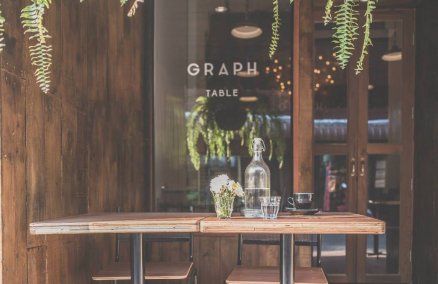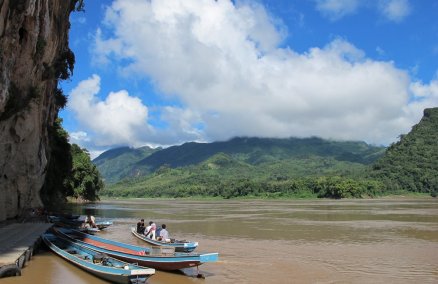68%
Approval rating for the Super Skywalk according to BMA Governor Sukhumbhand Paripatra
18%
Approval rating for the skywalk according to an online BKmagazine.com poll
To put things mildly, Bangkok’s sidewalks are not pedestrian friendly. For one, a good footpath is 2.5 meters wide, the width two wheel chairs need to easily pass each other at the same time according to the principle of urban planning. Obviously, most sidewalks in Bangkok fail on that count. But that’s not the least of it. There are also all the things that force pedestrians off the sidewalk in order to pass them: phone booths, bus stops, police boxes, overpasses and armies of street vendors—not to mention motorcycles and giant potholes.
The BMA’s solution? To build a super skywalk, a 50km-long walkway that loops around Sukhumvit, Phayathai and Taksin, which would make it the world’s largest skywalk system. Is this just sweeping our walkability issues under the carpet? Is the B15 billion budget reasonable? BK speaks to the city’s deputy governor, an urban planning expert and a walkability activist to find out.
Walking the Thai Way
Defining walkability to 2.5-meter-wide sidewalks is probably too narrow a view. Hot and humid, Bangkok’s walkability isn’t just a function of bigger is better. Asst. Prof. Khaisri Phaksukcharern from Chulalongkorn University explains:
“Udon Thani has a very wide footpath but no one walks because there are no trees or roofs to protect you from the sun and the heat. On the other hand, Singapore has wide, well-designed footpaths shaded by trees and people do walk there, even though it sits closer to the equator than us. So according to a psychological principle, if you have a very nice walkway, people will walk. We need to do things our own way, without copying countries with cooler weather.”
A few years ago, sidewalks on Ratchadamri Road got a facelift, making them some of the best in Bangkok. We owe it to Bangkok Sabai Walk, a group of university professors, activists and urbanism experts who lobbied hard better walkability. Oraya Sutabutr, part-time lecturer and member of Bangkok Sabai Walk, explains his collaborative approach:
“We need to work together. We asked entrepreneurs along the
road to pay for better footpaths in front of their buildings and it worked very well. Now we’re taking this approach to Siam Square. People need to wake up and act. You can’t just rant.”
Bangkok Sabai Walk organized a competition, seeking out ideas from the wider public and, finally, took its projects to the area’s major players. “We got a few designs and spoke to Chula, who is paying around B10 million, as well as Siam Paragon, Bangkok Bank and the Bangkok Metropolitan Administraton (BMA). We all agreed to push forward on this project. Now, we’re waiting for the illegal vendors to move out,” says Oraya. But he also places the blame on pedestrians themselves. “Students who need to use the sidewalk have to stop buying from vendors. Cheaper prices are not an excuse for those who do not play by the rules.”
The project includes widening a walking space and adding more trees and proper slopes for the disables but, now, the BMA seems to have changed its tune. With the Super Skywalk, it’s giving up on the sidewalks and taking pedestrians to new heights. “We were waiting for street vendors to move out, and now the BMA is announcing a Super Skywalk. We’re a bit amazed,” Oraya says.
Taking to the Skies
Bangkok’s Deputy Governor Teerachon Manomaiphibul is proud of his skywalk cred. “Skywalks aren’t new to me. I am the one who approved the Siam-Chidlom skywalk project when I was working for former governor Pichit Rattakul,” he told us. “Skywalks decrease vehicle use. That skywalk transports 100,000 people a day. Bangkok is getting more and more crowded every day and the sidewalks just aren’t enough. That’s how we came up with the Super Skywalk project.”
The BMA is adamant people want skywalks. Governor Sukhumband released his own poll saying 68% of Bangkokians are in favor, which had even the Bangkok Post asking in what conditions the poll had been held. BK Magazine held an online poll, too. 57% of respondents chose “we need better sidewalks, not skywalks” and only 18% voted for the skywalks. But Teerachon, of course, claims we all love skywalks. “The world’s most livable cities all have their own skywalks. We did research and polls and the result is that people and buildings along the train line want skywalks.”
Chula Prof. Khaisri flat out disagrees. “Cities with pedestrian overpasses are cities that surrender to cars. Cars are always at the core of urban planning decisions even though there are only 30 percent of urbanites that drive. People are the weakest vehicles. They should get the best treatment,” she says. “Pedestrians should be at the center of urbanism. And now we’re moving them into the air where they won’t have interaction with the urban fabric? It’s all wrong.”
Foot the Bill
The Super Skywalk is budgeted at B15 billion. Of course, Khaisiri doesn’t see this as a wise use of tax payers’ money. “The same amount of money can be spent to developed more space on sidewalks, add more trees and organize spaces for cart vendors on several roads,” she says.
“I think Thai people often use too much emotion when making decisions,” says Deputy Governor Teerachon. “I’m an engineer. I’ve been studying this since 2009. You need a reference point [to evaluate the budget]. For example, there is a private skywalk that is planned, linking Ratchaprasong and Pratunam. Its budget is B400 million for 800 meters—a lot higher than ours.”
To activist and lecturer Oraya, the project makes sense downtown. “Some areas or intersections that have busy traffic or are lined with high-rise buildings, like Ratchaprasong, need skywalks to move people around at the same time. But for less busy area, like Taksin, I don’t see the point.”
That segment, though, is the first to go up. The skywalk that links BTS Wongwian Yai and King Taksin Monument is under the BTS management and construction could begin as early as 2011. The BMA has scheduled completion of the entire system by 2014.
“We will see the feedback from the first project. If it is positive, we will continue. Remember there used to be a protest from a school that didn’t want a Skytrain station in front of their grounds, but now the same school is asking for a link from the station directly to the school. If it’s good, a project proves itself. You don’t need to trust me on everything. Do your research. Make your own decision. And if you think we failed, don’t vote for us in the next elections,” Teerachon says.
Urban Fabric
The Super Skywalk will get its own private security to prevent street vendors from selling their merchandise on the skywalk. The implication is that the BMA’s own force, the tessakit, are too corrupt and inefficient to carry out this mission. On Rama 1 Road in front of Siam Square, the three-meter-wide footpath is flanked by two parallel lines of street vendors so that many people end up walking on the road. But while street vendors are very damaging to walkability, Bangkok would be a pretty sad city without them.
“We’re actually looking for allowing more street vendors into the city. It’s part of our lifestyle,” says Teerachon. “But we need proper spaces for them, to make it more like walking streets just like in big cities around the world. We need to organize the place and time as well as standards of hygiene. Just like what we did at Saphan Kwai and Sanam Luang.”
While even Oraya and Khaisiri agree on managing street vendors in similarly vague terms, they also dream of seeing some new faces on the streets: bicycles and wheel chairs. “The reason you don’t see disabled persons on the streets is not that they don’t exist. It’s because they can’t get around easily,” says Oraya.
Could the Super Skywalk help? It promises elevators for wheelchairs and senior citizens, and free passage at BTS stations but elsewhere in Bangkok, what we’ve seen is that the interconnectivity of the disabled access is so poor that it remains impossible to use. For example, the massive flight of stairs at the newly opened Phaya Thai city rail link station makes it all but impossible to carry luggage up down from the train unless you’re an Olympic weight lifter—a problem the station’s skywalk link to the BTS station doesn’t address.
“Bangkok’s sidewalk complication is more complex than we thought. It’s not only a physical problem but it’s also related to social and economic issues. Bangkok has been hiding many problems for so long that they would take years to solve. Before imagining a breakthrough project like Cheonggyecheon in Seoul [a verdant artery running through the Korean capital’s downtown], we need to understand that Bangkok’s infrastructure is still below standard. The governor needs to treat this issue with sustainable solutions,” says Khaisri.
Who We Spoke to
Assistant Professor Khaisri Paksucharern (Ph.D): Head of Department of Urban and Regional Planning at the Faculty of Architecture, Chulalongkorn University.
Oraya Sutabutr: Part time lecturer and member of Bangkok Sabai Walk, Quiet Bangkok, and Big Trees projects.
Teerachon Manomaiphibul (Ph.D): Deputy Governor of Bangkok, responsible for urban planning, large scale construction projects and traffic solutions.
The Perfect Sidewalk: Ten qualities an ideal pavement should have
Five skywalks from around the world
BK ASKS: What is your worst pedestrian experience?




















